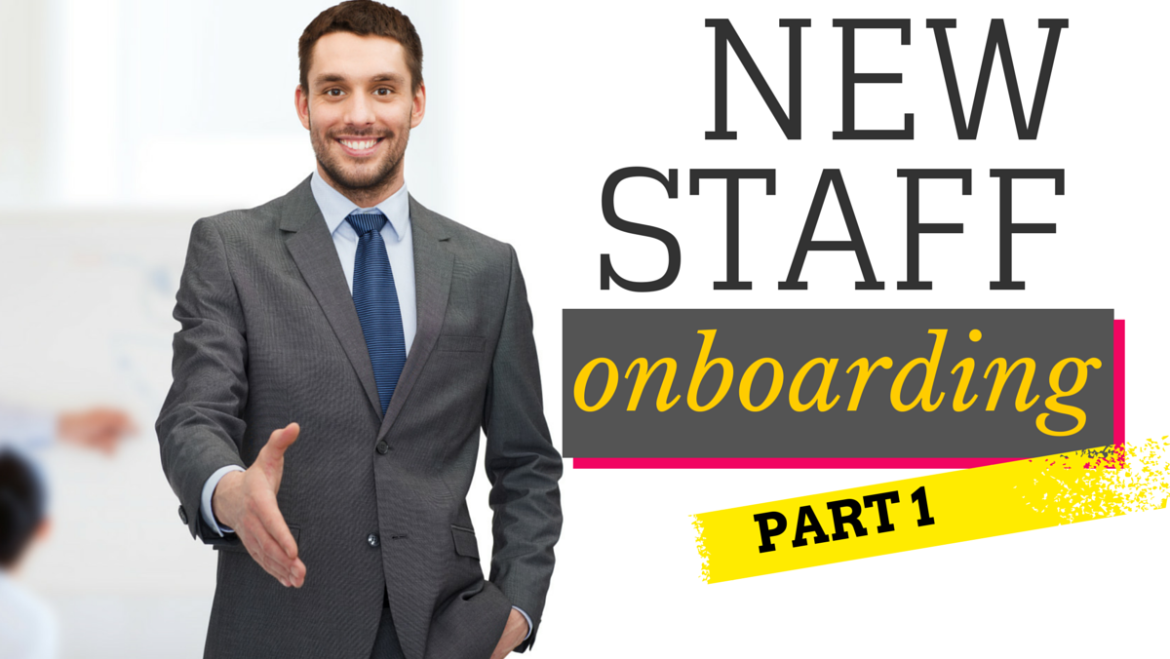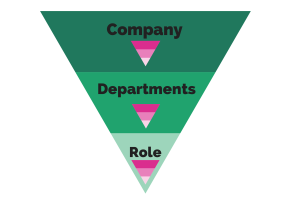New Hire Onboarding Process – Part 1
- Claire Hauser
- December 1, 2014
- 0 Comments

I once worked at a company where on any new employee’s second day, everyone would ask: “So you came back?!” Snigger snigger. But its not funny….it creates doubt! I’m sure after you used our last article “How to Welcome a New Employee – 10 Top Tips for a Great First Day“ to create the perfect first day experience, your new staff member had a great day. Now its time to start the real new hire onboarding process. We’ll cover this programme in 3 articles. This first one will lay out the methodology, the second will include actual content suggestions and the final piece will discuss how to reinforce the learning. So keep an eye out for the follow ups.
The creation of this programme will require a few hours of focused time to map out a plan to get the new employee up to speed as fast as possible. The great thing about putting in this effort is that you only have to do the bulk of it once. The template for introducing any new employee to your business will be similar, and each specific role will have the detail. So when the next person arrives, you can simply update it for them.
As for who creates the curriculum? You have a couple of options.
- As the manager, you do it. (Especially if this is a new position, you tend to be the only one who can do this since you will have the vision for the role.)
- Delegate to someone or multiple people in your team.
- If you are replacing a position, get the leaving party to produce this and it will double up as a handover document.
Option 3 above is often a winner! As soon as someone resigns, I set the expectation that the top priority for them before they leave is to complete an extremely comprehensive handover pack. I often lay out the bones for them and then meet with them every few days to assess progress. The great thing about this is that they can also provide the “answer set”, something you would unlikely have time to do. However beware of asking a leaving staff member to train the new recruit. Very carefully assess the state of mind of the leaving party. Sometimes even the most wonderful employees who are leaving can be a bit jaded or negative (its human nature….) and remember, this whole exercise is about first impressions.
How long should you allow for the new recruit to finish the “syllabus”? Depending on the complexity of the role, you should allow about a month or two to cover off on all these meetings.
So what should this template involve?
You essentially want to map out a template for your syllabus including:
- What the new employee is going to learn in each session
- Who is going to be the trainer for each session
- When and where this session is going to be held
Getting Buy in from the Trainers
To support this syllabus you need to get up front buy-in from each person that you choose to conduct the sessions. Here’s what you need to do.
- Meet with each trainer that you have identified for each session. 15 minutes should be enough!
- Discuss with them exactly what you want covered.
- Discuss appropriate supporting documentation that could be made available to reinforce the training.
- Ask them to suggest any great articles or reading material.
- Discuss appropriate pop quizz questions. (covered in more detail in part 3)
Point 2 above, is very important. Beware of sweeping statements like “ Please just give them an overview of your department”. Wow. That is going to land up going horribly wrong, and is going to be a waste of time. The likely output of that is your new employee feeling lost and overwhelmed. What’s important to a person running a department, might just be too much for a new person and may well not actually be important within their role. The newbie will be distracted to confusion. Reign the trainer in and get them to understand that while they are the expert in their field, you have an onboarding plan that you would really appreciate them getting onboard with. Diplomatically explain that they should remember that it’s not about them….its about the new employee. Also make sure that the trainer understands the role of your new employee. This will give them context to what they are teaching.
The Funnel Approach
So what should this programme actually cover? Well firstly and importantly, the order of information needs to be logical and easy to digest. You want to take a funnel approach ie start broadly about the company, moving down to departments and then on to the role specifically; and then within each of these again funnel it down.
Keep an eye out for the next article giving you the content outline for your onboarding programme.
I’ve spent the last 10 years working in digital marketing and ecommerce. I’ve been the agency, the client, and lectured and trained 1000’s of people. I have a passion for training and development, smart, simple marketing...and running and wine...not at the same time :)


